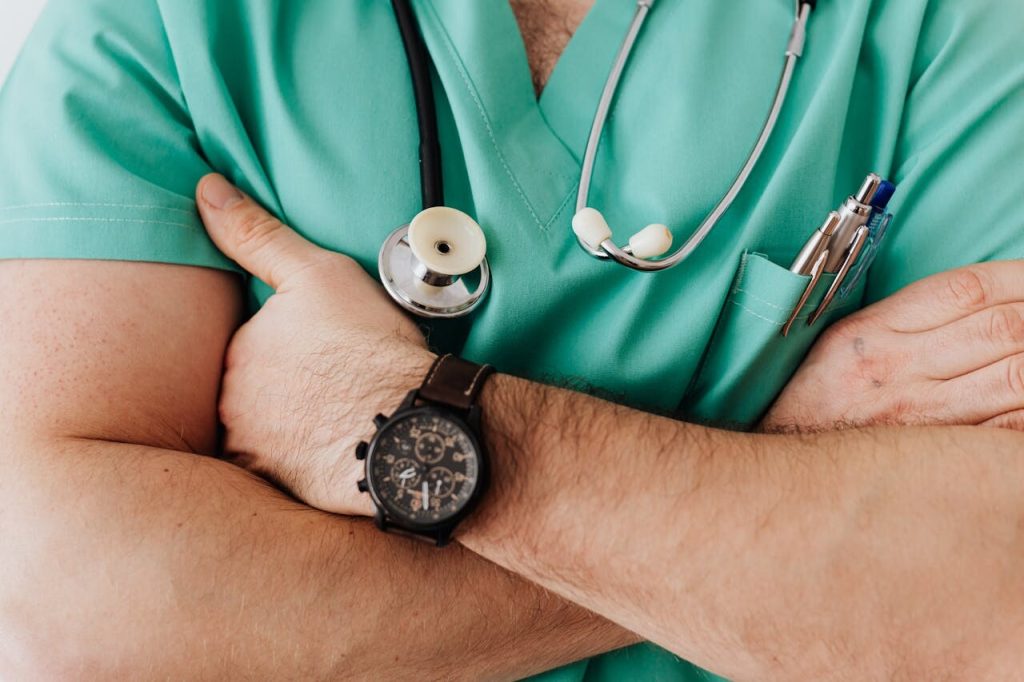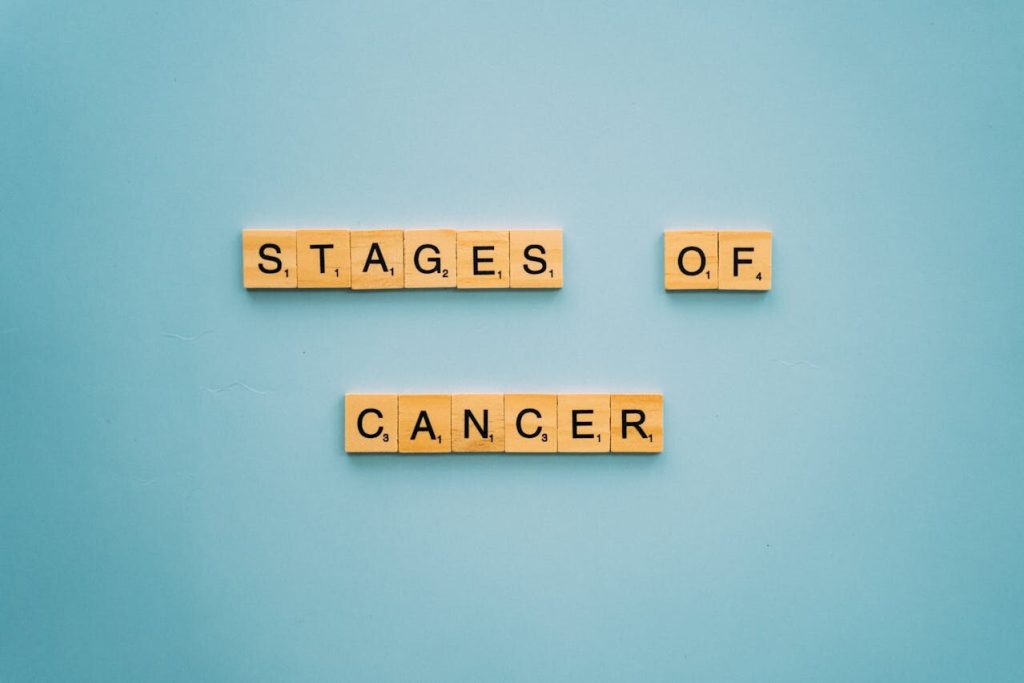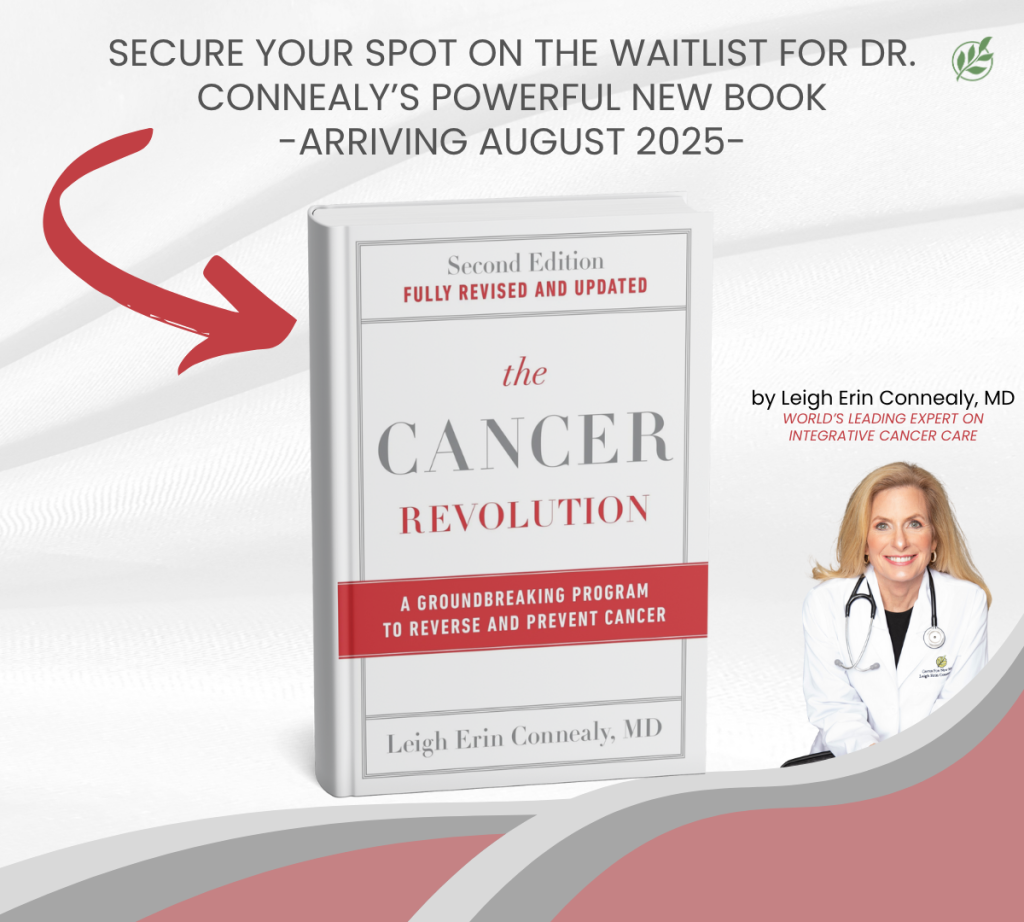As the popularity of dry brushing as a skincare practice continues to rise, concerns have been raised about its potential risks – especially the possibility of spreading cancer. While some anecdotal evidence has linked dry brushing to cancer, there is currently no scientific evidence to support this claim. This section will examine the risk factors associated with dry brushing and cancer to help readers make informed decisions about their skincare practices.
Key Takeaways:
- Dry brushing is a popular skincare practice that involves using a dry brush to exfoliate the skin.
- There is no scientific evidence to suggest that dry brushing can spread cancer.
- The risk factors associated with cancer are complex and may include smoking, exposure to certain chemicals, and genetic predispositions.
What is Dry Brushing?
Dry brushing is a skincare practice that involves using a natural bristle brush to exfoliate the skin. The brush is typically used on dry skin, before showering or bathing, in long strokes towards the heart.
Proponents of dry brushing claim that it can stimulate the lymphatic system, improve circulation, and promote the removal of toxins from the body. It is also said to help reduce the appearance of cellulite and improve skin texture.
Understanding Cancer
Cancer is a disease that affects the body’s cells, the building blocks that form tissues and organs. In a healthy body, cells grow and divide in an orderly manner to replace old or damaged cells. However, cancer cells grow and divide uncontrollably, often forming masses or tumors that can invade nearby tissues and organs.
There are many types of cancer, each with unique characteristics and risk factors. Some common types of cancer include lung cancer, breast cancer, prostate cancer, and colorectal cancer. While cancer can occur at any age, the risk of developing cancer generally increases with age.
There are several factors that can increase the risk of developing cancer, including:
| Factor | Description |
|---|---|
| Environmental factors | Exposure to certain chemicals, radiation, and pollution |
| Lifestyle choices | Smoking, excessive alcohol consumption, poor diet, and lack of exercise |
| Genetics | Inherited gene mutations that increase the risk of cancer |
| Infections | Some infections, such as human papillomavirus (HPV) and hepatitis B and C, can increase the risk of certain types of cancer |
Early detection is important for successfully treating cancer. Common screening methods include mammograms, colonoscopies, and Pap tests. Treatment options may include surgery, chemotherapy, radiation therapy, or a combination of these methods, depending on the type and stage of cancer.
Common Risk Factors for Cancer
Cancer is a complex disease that can arise from various factors that damage DNA and lead to abnormal cell growth. While some cases are associated with genetic mutations, lifestyle choices also play a significant role in increasing the risk of cancer.
| Risk factors | Description |
|---|---|
| Smoking and tobacco use | Exposure to tobacco smoke, including secondhand smoke, has been linked to multiple types of cancer, including lung, throat, and bladder cancer. |
| Exposure to certain chemicals | Long-term exposure to chemicals, such as asbestos, benzene, and radon, can increase the risk of lung cancer and other types of cancers. |
| Family history and genetic predisposition | Certain inherited genetic mutations, such as BRCA1 and BRCA2, can increase the risk of breast, ovarian, and other cancers, while a family history of cancer can also indicate an increased risk. |
| Poor diet and sedentary lifestyle | A diet high in processed foods, red and processed meats, and low in fruits and vegetables, as well as a sedentary lifestyle, can contribute to the development of some cancers. |
| Excessive alcohol consumption | Heavy alcohol consumption has been linked to an increased risk of multiple types of cancer, including breast, liver, and colorectal cancer. |
It’s important to note that these risk factors may not cause cancer directly but may influence the body’s internal environment in a way that encourages the growth of cancerous cells. Understanding and addressing these risk factors can help individuals reduce their risk and promote overall health and well-being.
Exploring the Claims about Dry Brushing and Cancer
As dry brushing gains popularity as a skincare practice, concerns have been raised about its potential link to cancer. Some have claimed that dry brushing can spread cancer by dislodging cancer cells from the skin and spreading them throughout the body via the lymphatic system. However, there is currently no scientific evidence to support this claim.
While there is anecdotal evidence and expert opinion suggesting a potential link between dry brushing and cancer, the lack of scientific evidence makes it difficult to draw any conclusions. Some experts suggest that the risk of cancer spreading through dry brushing is very low compared to other risk factors associated with cancer.
It is important to note that there are specific risk factors associated with certain types of cancer, and individuals should consult with their healthcare provider for personalized advice. This includes individuals with a family history of cancer, those with pre-existing skin conditions, and anyone undergoing cancer treatment.
Lack of Scientific Evidence
Despite concerns that dry brushing might spread cancer or increase the risk of cancer, there is currently no scientific evidence to support these claims. While anecdotal evidence and expert opinions may suggest a potential link, there is no published research to confirm or deny this association.
However, it is important to note that the lack of evidence does not necessarily mean that dry brushing is safe for everyone, or that it poses no risks. As with any skincare practice, there is a potential for skin irritation, infections, or other adverse effects, particularly if performed improperly or by individuals with certain medical conditions.
Potential Dangers of Dry Brushing
Dry brushing is generally considered safe, but there are some potential risks that individuals should be aware of before beginning this practice. While there is no evidence to suggest that dry brushing can spread cancer, there are other dangers associated with this skincare method.
One potential risk is skin irritation. Dry brushing involves using a rough bristled brush on the skin, which can cause redness and irritation, especially if done too vigorously or too often. This can be particularly problematic for individuals with sensitive skin or pre-existing skin conditions, such as eczema or psoriasis.
Another risk is the potential for infections. Dry brushing can create tiny tears on the skin’s surface, which can make it more susceptible to infection. It is important to use a clean, dry brush and to avoid dry brushing over areas of broken skin or active infections.
Individuals with certain skin conditions, such as rosacea or acne, may find that dry brushing exacerbates their symptoms. Additionally, if performed too often or with too much pressure, dry brushing can cause micro-tears in the skin that may increase the risk of sun damage and premature aging.
While dry brushing can be a beneficial part of a skincare routine when done correctly and safely, it is important to be aware of the potential risks and to consult with a healthcare professional if you have any concerns.
The Comprehensive Approach to Cancer Care at the Cancer Center for Healing
The Cancer Center for Healing, located in Irvine, CA, offers a comprehensive approach to cancer care that focuses on treating the whole person, not just the disease. Led by Dr. Leigh Erin Connealy, the center provides a range of holistic treatment modalities that integrate conventional and complementary therapies.
At the Cancer Center for Healing, patients receive individualized care that addresses their unique needs, preferences, and goals. The center’s team of experts collaborates with each other and with the patients to develop a personalized treatment plan that includes integrative therapies, nutritional support, mind-body techniques, and other complementary approaches.
The Cancer Center for Healing emphasizes the importance of empowering patients to take an active role in their cancer treatment. The center’s team offers resources and education to help patients understand their condition, treatment options, and ways to manage their symptoms and side effects.
Holistic Treatment Modalities at the Cancer Center for Healing
The Cancer Center for Healing in Irvine, CA provides a comprehensive approach to cancer care that includes holistic treatment modalities. Dr. Leigh Erin Connealy and her team of experienced healthcare professionals personalize treatment plans to meet the unique needs of each patient.
The Cancer Center for Healing offers a range of integrative therapies, including IV nutrient therapy, ozone therapy, and hyperbaric oxygen therapy. These therapies can help boost the immune system, reduce inflammation, and support the body’s natural healing processes.
Nutritional support is also an integral part of the Cancer Center for Healing’s approach to cancer care. The team of experts provides specialized dietary plans that include organic, whole foods and supplements to support the body’s nutritional needs during treatment.
Additionally, mind-body techniques like meditation, yoga, and guided imagery are used to promote emotional and spiritual well-being. These modalities can help reduce stress, anxiety, and depression, which can all impact a patient’s overall health and healing.
Consultation and Contact Information
To learn more about the comprehensive approach to cancer care at the Cancer Center for Healing, including holistic treatment modalities and integrative therapies, readers are encouraged to schedule a consultation with Dr. Leigh Erin Connealy and her team of experienced healthcare professionals. To book an appointment, please call (949) 680-1880 or fill out the online form on the Cancer Center for Healing website.
The Role of Skincare Practices in Cancer Prevention
Skincare practices play an important role in overall health and well-being, including cancer prevention. While there is no evidence to suggest that dry brushing spreads cancer, it is crucial to maintain healthy skin to reduce the risk of developing skin cancer.
The Importance of Sun Protection
One of the most important skincare practices for cancer prevention is sun protection. Exposure to UV radiation from the sun can damage skin cells and increase the risk of skin cancer. It is important to use broad-spectrum sunscreen with an SPF of 30 or higher, wear protective clothing, and avoid prolonged sun exposure during peak hours.
The Benefits of a Balanced Diet
Eating a balanced diet rich in fruits, vegetables, and whole grains can also benefit skin health and reduce the risk of cancer. Antioxidants found in these foods help protect skin cells from damage caused by free radicals, and certain nutrients like vitamin A may even help prevent skin cancer.
Hydration and Skincare
Staying hydrated is also important for healthy skin. Adequate hydration helps flush toxins from the body and keeps skin moisturized. Dry skin is more susceptible to damage and may be more prone to skin cancers.
Evidence-Based Skincare Recommendations
When it comes to skincare practices and cancer prevention, it is essential to follow evidence-based recommendations. While some skincare trends may claim to have anti-cancer properties, there is often little scientific evidence to support them. Consult with a healthcare professional for personalized skincare recommendations and cancer prevention strategies.
Promoting Healthy Skin: Tips and Best Practices
While dry brushing may not spread cancer, there are other skincare practices that can promote healthy skin and potentially reduce the risk of skin cancers.
Here are some evidence-based tips and best practices for maintaining healthy skin:
- Stay hydrated by drinking plenty of water and fluids.
- Protect your skin from the sun by wearing protective clothing, using sunscreen with at least SPF 30, and avoiding sun exposure during peak hours.
- Maintain a healthy diet rich in fruits, vegetables, and whole grains to provide essential vitamins and nutrients for skin health.
- Avoid smoking and limit alcohol consumption, which can contribute to premature aging and increase the risk of skin cancer.
- Use a gentle soap or cleanser to avoid damaging the skin barrier.
- Moisturize regularly to maintain skin hydration and prevent dryness.
- Check your skin regularly for any changes or unusual moles and seek medical attention if there is any concern.
Following these tips and best practices can help promote healthy skin and reduce the risk of skin cancer. It is always important to consult with a healthcare professional for personalized recommendations and advice on maintaining skin health.
Conclusion
While there is much interest in the alleged connection between dry brushing and cancer, there is currently no scientific evidence to support this claim. However, it is essential to note that improper dry brushing techniques or using inappropriate tools could lead to skin irritation, infections, and exacerbation of pre-existing skin conditions.
It is best to seek professional medical advice from experienced healthcare practitioners before incorporating any new skincare practice into your routine. The Cancer Center for Healing, located in Irvine, CA, offers a comprehensive approach to cancer care that includes holistic treatment modalities for various types of cancers. Their approach highlights the importance of individualized care and a focus on overall health and well-being.
Although research on the role of skincare practices in cancer prevention is ongoing, maintaining healthy skin remains an essential aspect of overall health. Drinking plenty of water, practicing proper sun protection, and maintaining a balanced diet can all contribute to healthy skin. It is crucial to prioritize evidence-based skincare practices to prevent skin damage and promote long-term skin health.
Consultation and Contact Information
If you have concerns about cancer or are interested in seeking holistic treatment options, you can contact the Cancer Center for Healing at (949) 680-1880 to schedule a consultation with Dr. Leigh Erin Connealy or another experienced practitioner.
FAQ
Q: Can dry brushing spread cancer?
A: There is currently no scientific evidence to suggest that dry brushing spreads cancer. The risk factors associated with cancer are primarily related to genetic predisposition, exposure to certain chemicals, and lifestyle choices such as smoking. Dry brushing itself is not known to promote the spread of cancer.
Q: What is dry brushing?
A: Dry brushing is a skincare practice that involves using a natural bristle brush to gently exfoliate the skin. It is typically performed in a circular motion, starting from the extremities and moving towards the heart. Dry brushing is believed to improve circulation, exfoliate dead skin cells, and promote lymphatic drainage.
Q: What is cancer?
A: Cancer is a group of diseases characterized by the uncontrolled growth and spread of abnormal cells in the body. It can affect various tissues and organs, and if left untreated, can be life-threatening. Early detection and treatment are crucial in managing cancer.
Q: What are the common risk factors for cancer?
A: Common risk factors for cancer include smoking, exposure to certain chemicals and toxins, genetic predispositions, unhealthy diet and lifestyle choices, and exposure to ionizing radiation. It is important to note that the risk factors associated with cancer are multifactorial and vary depending on the type of cancer.
Q: Is there a link between dry brushing and cancer?
A: There is currently no scientific evidence to support a direct link between dry brushing and the development or spread of cancer. However, it is always recommended to consult with healthcare professionals for personalized advice and to prioritize evidence-based skincare practices.
Q: Are there potential dangers associated with dry brushing?
A: While dry brushing is generally considered safe, there are potential dangers to be aware of. These include skin irritation, infections, and exacerbation of pre-existing skin conditions. It is important to use a gentle touch and follow proper hygiene practices while dry brushing.
Q: What is the Cancer Center for Healing?
A: The Cancer Center for Healing is a holistic cancer treatment facility located in Irvine, CA. Led by Dr. Leigh Erin Connealy, they offer comprehensive and integrative therapies for various types of cancer.
Q: What holistic treatment modalities are offered at the Cancer Center for Healing?
A: The Cancer Center for Healing offers a range of holistic treatment modalities, including integrative therapies, nutritional support, mind-body techniques, and other complementary approaches. These modalities aim to support the overall well-being of cancer patients and enhance their body’s natural healing abilities.
Q: How can I schedule a consultation at the Cancer Center for Healing?
A: To schedule a consultation at the Cancer Center for Healing, you can contact them at (949) 680-1880. Seeking professional medical advice is essential for individualized cancer care and treatment.
Q: What is the role of skincare practices in cancer prevention?
A: Skincare practices play a role in maintaining overall skin health, which is important in cancer prevention. While there is no definitive evidence linking specific skincare practices to cancer prevention, maintaining a balanced skincare routine, protecting the skin from excessive sun exposure, and adopting a healthy lifestyle can contribute to overall well-being.
Q: How can I promote healthy skin?
A: To promote healthy skin, it is important to stay hydrated, use sunscreen, maintain a balanced diet, practice good hygiene, and avoid excessive exposure to harsh chemicals and environmental pollutants. Additionally, regular check-ups with dermatologists can help detect any potential skin issues early on.






